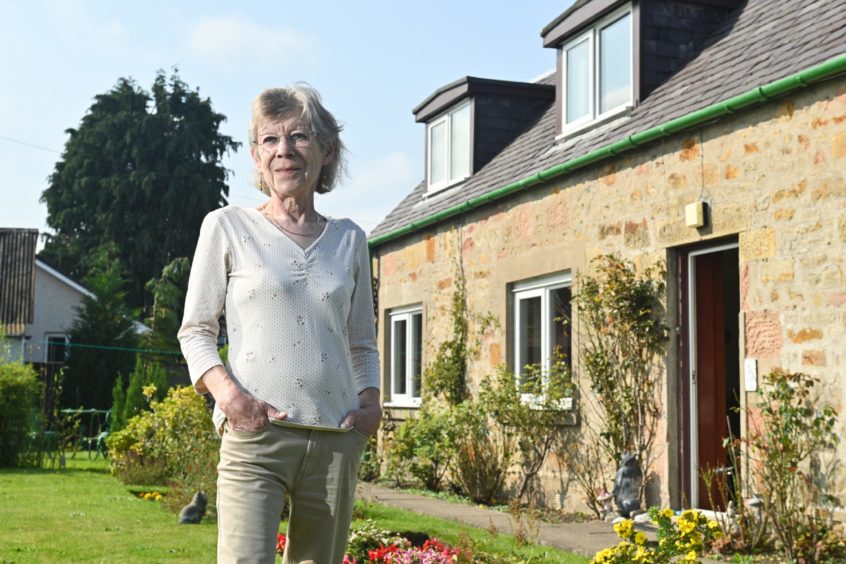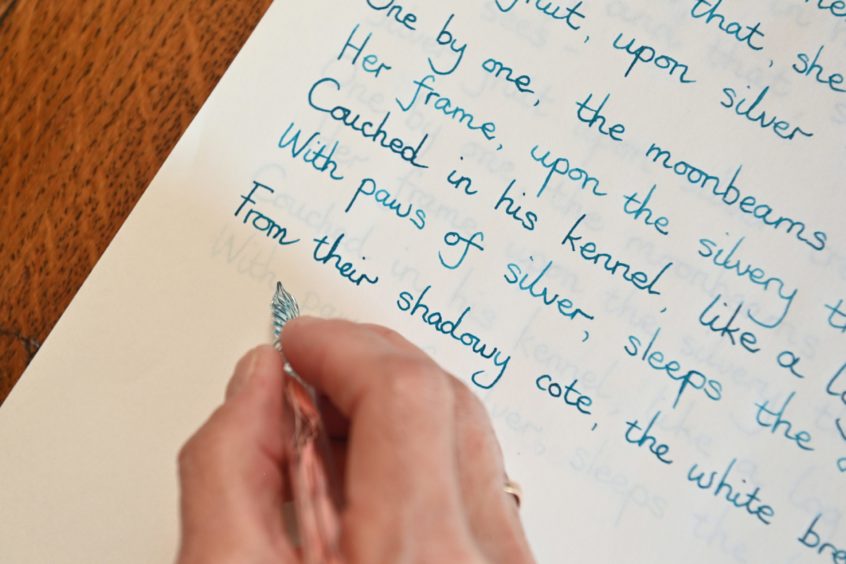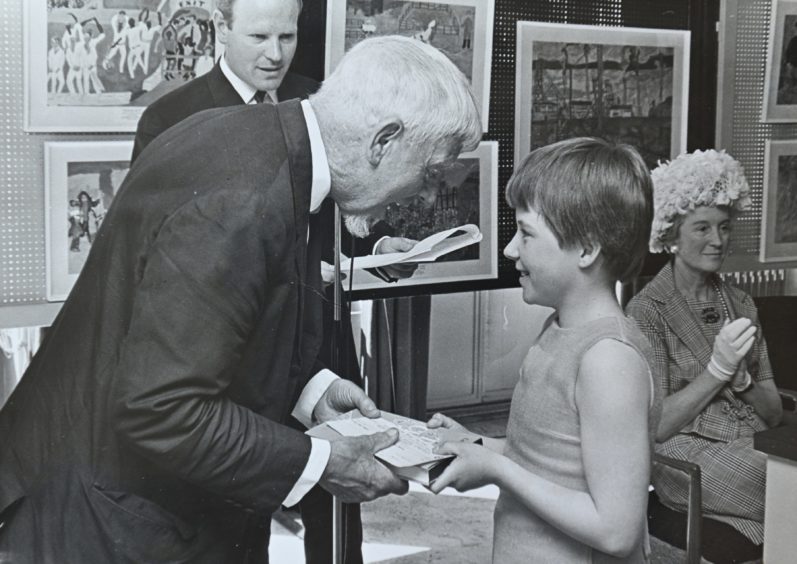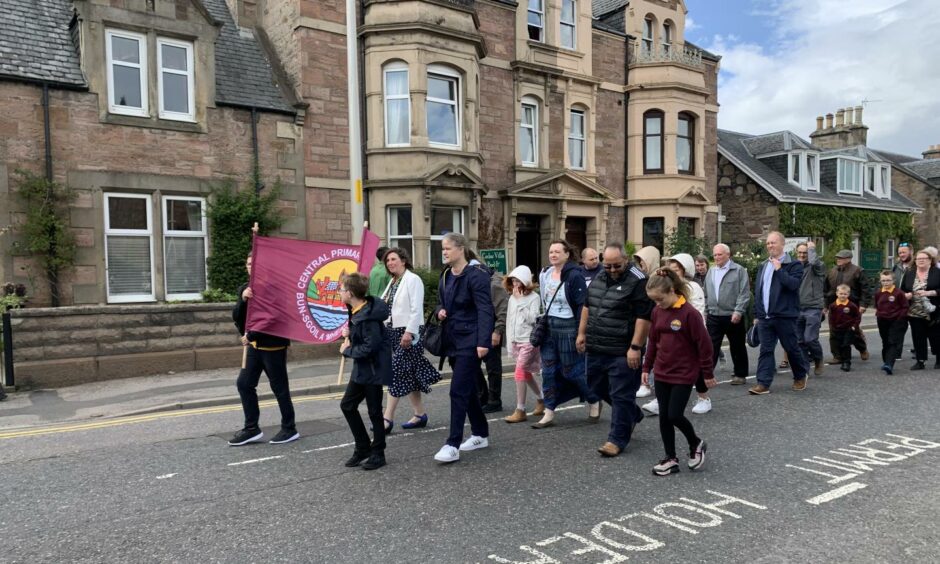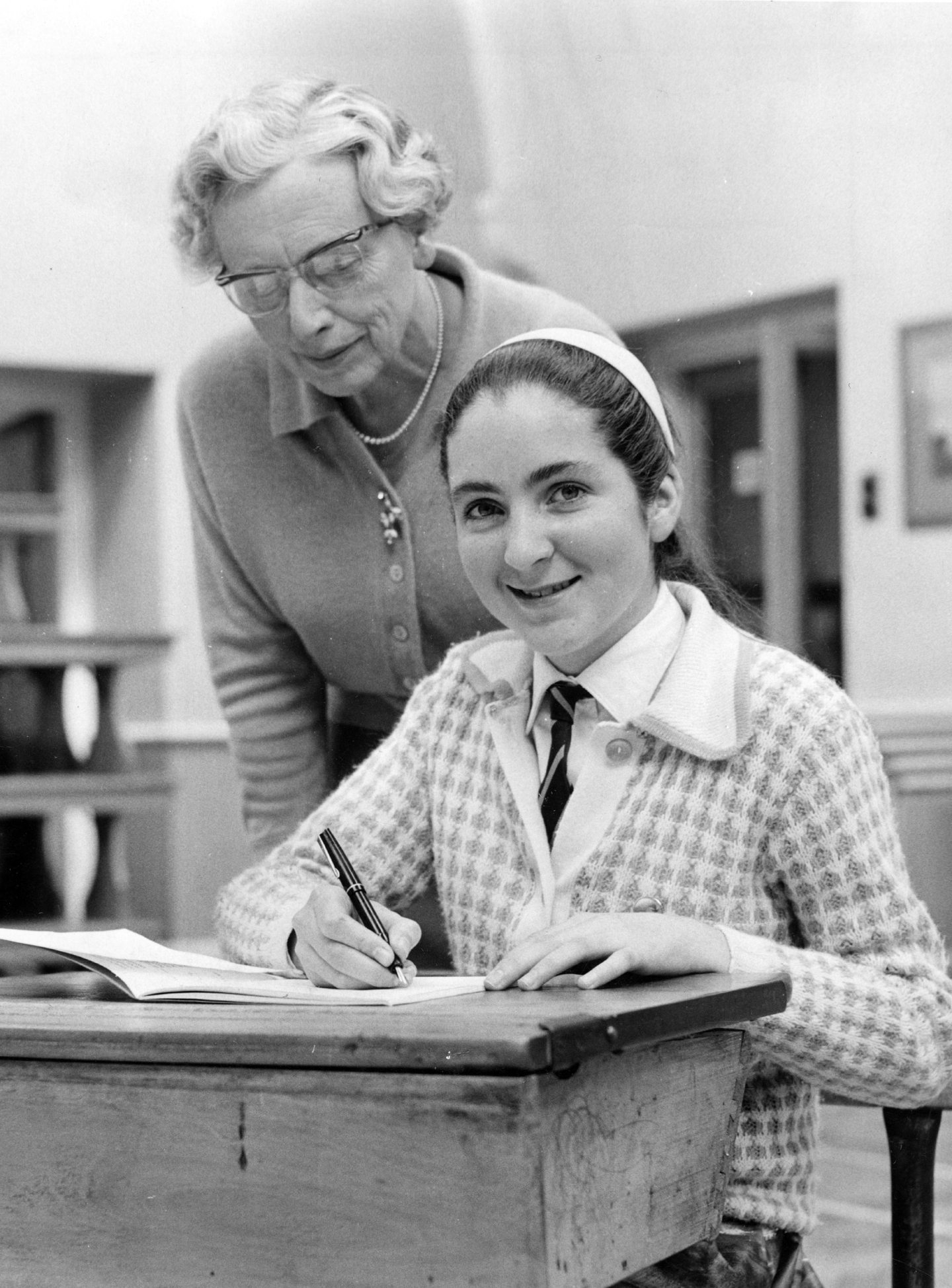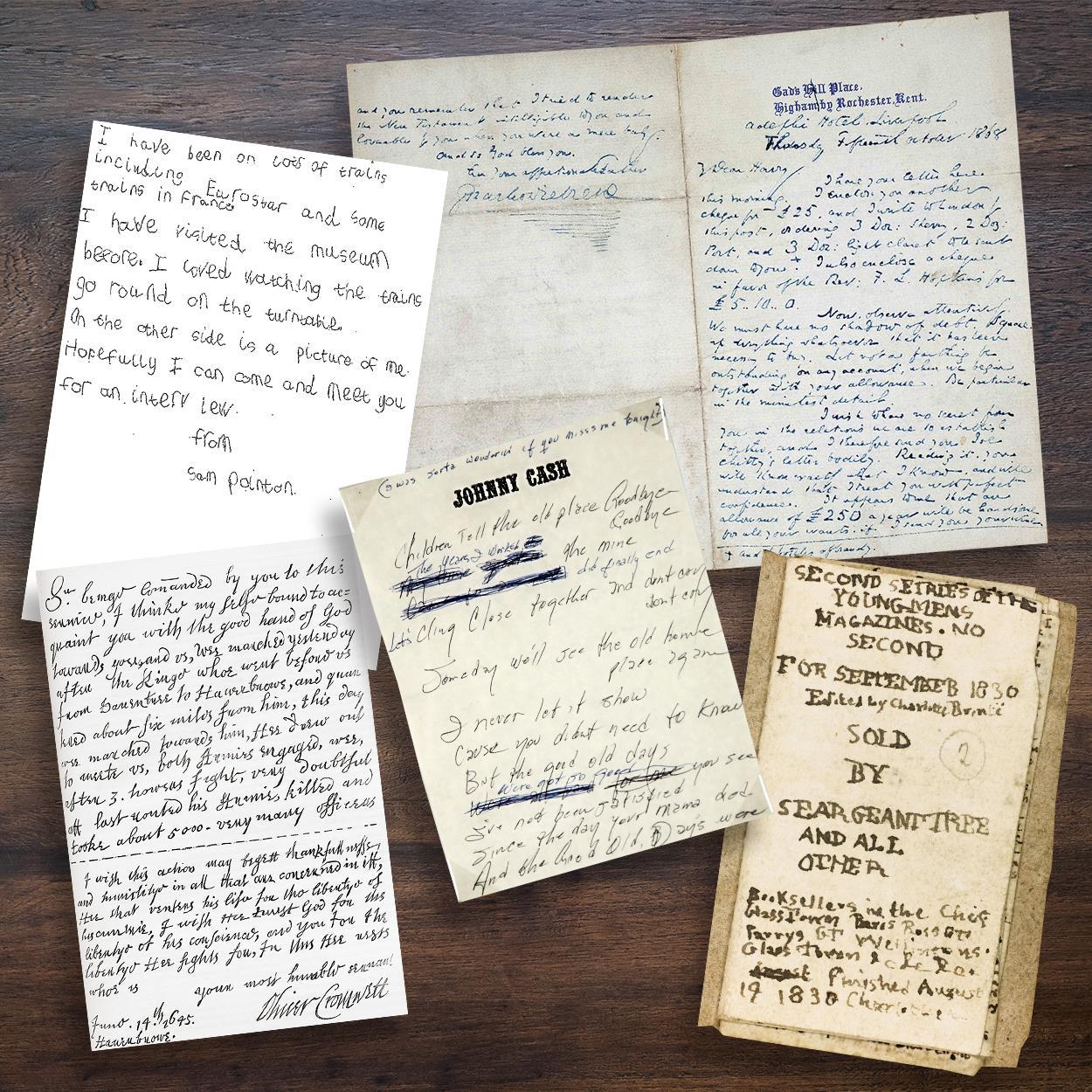According to Ghandi, “bad handwriting should be regarded as a sign of an imperfect education”.
In light of this, Invernessian Jane Campbell, former pupil of Central primary, can congratulate herself on a perfect education, as her handwriting not only won a national competition when she was 10, but remains undecimated by the computer age to this day.
Jane (nee Fraser) attended Central school from 1962-69.
In P6 her teacher was the much-loved Miss Harriet Maclennan, a stickler for handwriting perfection.
In perfect silence, the class would practice their handwriting, abiding by a set of strict rules.
The letter ‘l’ was the tallest, with every other letter two thirds of its size. Capitals had to be unembellished, and not joined up.
The dotting and crossing of i’s and t’s was only to be done once the word was complete. The title of your work had to be precisely underlined.
And practice was always carried out in pencil, never biro.
But dipping pens and ink in the desks’ inkwells were the order of the day when Miss Maclennan sat P6 down one fine day in 1968 to copy a Walter de la Mare poem, Silver, to enter into the Brooke Bond National Junior Handwriting competition.
Little did Jane Fraser of Glenurquhart Road realise that her efforts that day would be so successful she would win the competition outright, and be flown down to London for a presentation and three days of sightseeing and gallivanting.
She also received a massive £100 – worth £1,700 today – with a further prize of £20 going to the school.
Jane, still resident in Inverness, remembers how it all happened.
“We were practising for the school sports at the Northern Meeting Park and over at the wall getting changed into our sandshoes when all of a sudden we saw Mr Coull, the head teacher come walking over towards us with two immaculately dressed men.
‘What have we done?’
“Everybody sat back in horror, thinking, ‘what have we done?’
“The he called me over and told me what it was all about, and all I could say was, oh but I’m going to miss the heats for the sports when he said can we go over and meet your mum – she worked in the Town House at the time.
“We went over in a great, big, fancy black car. They parked outside the Town House, which you weren’t supposed to do in those days.
“I took them into mum’s office and they explained what was what, making arrangements for the flights and the accommodation in London.
“They had a good chat with mum, and when they went away I started crying, ‘but mum you promised me after school we would go and get a new hamster’.
“That and missing the heat for the sports was all that was in my head.”
Flying was a big thrill in that time.
Jane remembers the leather sofas in the lobby of the Connaught Hotel and seeing Wimbledon playing in colour on the TV for the first time.
A presentation by the chairman of Brooke Bond followed, and sightseeing trips including a trip down the River Thames.
A few months later, Jane was invited to the Scottish presentation in Glasgow, staying at the Central Hotel.
The school was awarded £20 for Jane’s success, which went towards paying for a big TV for the assembly hall.
New bicycle
So how did Jane spend her £100?
“The first thing I did was treat myself to a new bicycle.
“I’d had my eye on it in the bicycle shop in Young street. I’d seen this bike in the window and it was silver, pink and metallic blue. I just loved it; it was all I wanted, my pride and joy.”
Later, when Jane had progressed to Inverness Royal Academy, she spent the rest of the prize money on a school cruise on the SS Uganda.
“We went to Portugal, Tangier, Gibraltar, places like that, it was fantastic.
“That would have been about £70 at the time, my mum couldn’t have afforded that normally so that’s what I spent the rest of the money on.”
Central Primary celebrates 200 years this year, and Jane treasures fond memories of her time there.
“I loved the school, everything about it, the routine; it was quite disciplined at the time.
“It was quite old fashioned, you weren’t allowed to walk across the hall, you had to stick to the white lines round the hall, you weren’t allowed to run.
“You didn’t go into the school until the bell went at 9am, then you had to line up outside in twos, girls first then boys, stand at the door then teacher would come out with a little handbell and open the door and in you went then.
“At lunchtime you weren’t allowed out of the school unless (there were) very exceptional circumstances
“I loved school dinners and those little third of a pint bottles of milk.
“The teachers were really nice.
“Harriet Maclennan had P6 and 7 and everyone was a wee bit in awe of her.
“The majority of what I actually learned was from Miss Maclennan; she was an excellent teacher, geared up to getting us into secondary school.
“We were the last year to sit the 11 plus, and it was Miss Maclennan’s final year before she retired.”
Jane’s prizewinning handwriting was framed and hung in the school hall for many years.
When her own daughter, Shona, attended Central in 1989, she found it was no longer there, and tried to track it down.
“There had been redecoration and it was lost,” Jane said.
Nowadays she still receives compliments for her handwriting.
“I wish handwriting was more of a thing with the young,” she said. “I’d like to see it come back as something we value.”
